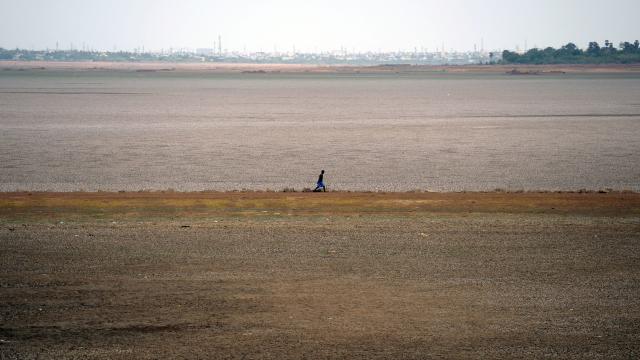El Niño is one of the most familiar climate patterns on Earth. Pools of water in the eastern tropical Pacific Ocean become abnormal warm, triggering changes in global weather patterns.
Well thanks to the climate crisis, El Niño may have some competition. A new study published in Science Advances on Wednesday shows that as early as mid-century, global warming could cause an ancient climate pattern similar to El Niño in the Indian Ocean to reawaken. It would throw weather further into disarray, particularly in places in the global south that depend on rainfed agriculture.
The study builds on a previous one published by some of the same authors last year, which found that this climate pattern in the Indian Ocean may have existed during the last Ice Age, 20,000 years ago. Back then, thanks to abrupt global warming driven by natural causes, fluctuating ocean temperatures wreaked havoc on global weather patterns.
Now, human activities are driving the climate into a similarly unsteady state. To examine how our rising carbon emissions could influence the Indian Ocean, the researchers used climate models of what the rest of the century will look like if world leaders do nothing to curb greenhouse gas emissions (a scenario known as RCP8.5). They found that if current global warming trends continue, we could see huge fluctuations in the Indian Ocean’s surface temperatures by 2050 similar to what happened 20,000 years ago.
“The Indian Ocean today experiences very slight year-to-year climate swings because the prevailing winds blow gently from west to east, keeping ocean conditions stable,” Pedro Di Nezio, the study’s lead author and a geophysicist at the University of Texas, told Earther in an email. “According to the simulations, global warming could reverse the direction of these winds, destabilizing the ocean and tipping the climate into swings of warming and cooling.”
Though it’s a separate phenomenon, the possible new pattern would be linked in many ways to El Niño and its opposite counterpart, La Niña. Every three to seven years, temperatures would increase or decrease by up to 2 degrees Celsius, depending on whether it’s an El Nino year or a La Nina year. The changes would last between three and six months.
Changes of a mere degree or two may not seem like a huge deal. But if this pattern re-emerges, floods, storms, and droughts will become worse and more frequent, especially in Africa, Australia, Indonesia, and India — areas already severely impacted by climate change. Warm events could drive droughts over the Horn of Africa and southern India (both of which have already seen grave climate effects) and increased rainfall in Indonesia and northern Australia. Cold events could create opposite effects—for instance, the Indian peninsula could see increased rainfall.
The effects would be disastrous. A number of these locations rely on rainfed agriculture, and any shifts in precipitation could be disastrous for farmers. Drought conditions in Australia also raise the risk of dangerous bushfires, which the world got a glimpse of earlier this year. The swing between drought and flood in the Horn of Africa created the conditions for massive locust swarms, which are currently threatening food security for tens of thousands of people.
Malte Stuecker, an Oceanography Professor at the University of Hawaii at Manoa, who didn’t work on the study, said these findings were “robust.” he also noted even the comparatively small temperature variations that already occur in the Indian Ocean have a huge influence on weather patterns in the global south.
“As Earth continues to warm, these new type of future temperature variations in the Indian Ocean will have much amplified impacts on rainfall across all Indian Ocean rim countries and beyond,” he said.
It’s not clear exactly what threshold global warming would have to cross to trigger these shifts. But that’s actually disconcerting because the unknowns and tipping point-driven shifts make it harder to plan for the future.
“The exact magnitude of global warming… at which the first of these El Niño (or La Niña) events will be triggered is hard to know with precision,” said Di Nezio. He said scientists will soon begin research to determine whether or not these changes will occur once we pass 1.5 degrees Celsius (2.7 degrees Fahrenheit) of warming above pre-industrial levels.
To learn more, Stuecker suggested researchers compare their findings with the latest climate models being used for an upcoming United Nations climate report.
“These simulations were not available during the time that this paper was written,” he said.
Though there is much more to learn about the potential of an Indian Ocean El Niño, one thing is clear: The biggest factor in whether or not it will emerge is us.
“The re-emergence will depend strongly on the rate of global warming, so ultimately on whether greenhouse gas emissions are abated or not,” said Di Nezio. “We are certain that the risks of these extreme events is becoming larger and larger as we pump more CO2 into the atmosphere, and certainly going to have an unequal impact on countries in the tropics.”
